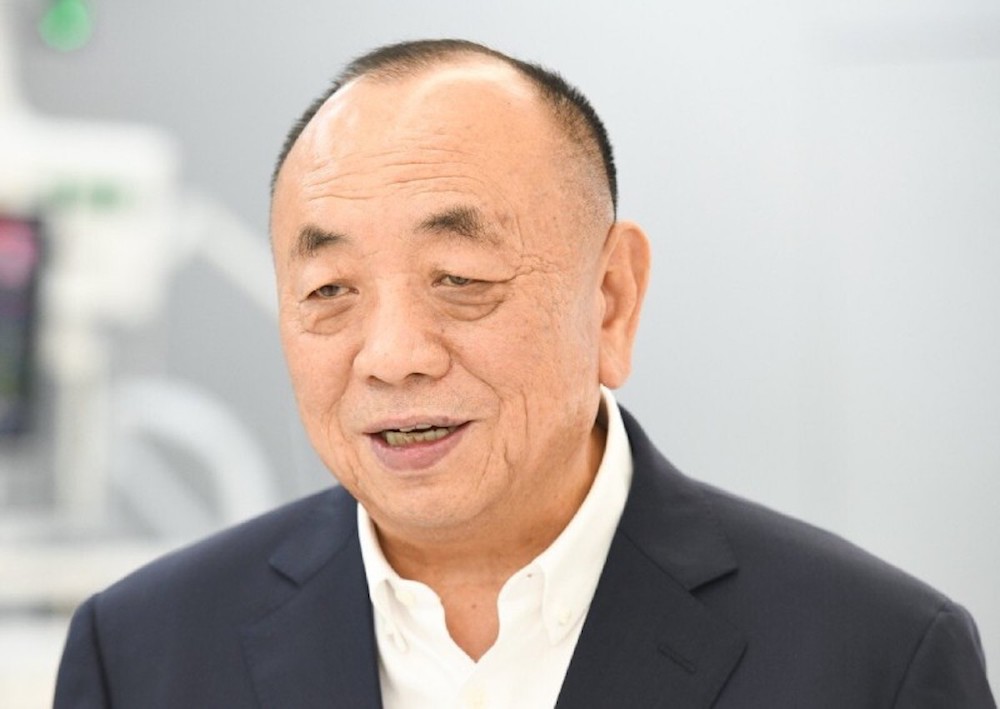Last week, business magazine Forbes released its Singapore’s Richest 2021 list and Li Xiting took the top spot with a net worth of US$23 billion (~S$31 billion), up from the second position last year.
The Singapore citizen is also ranked 82nd on Forbes’ Billionaires 2021 list and 20th on Forbes’ China Rich List 2020.

His net worth has steadily increased over the years — from US$2.1 billion in March 2018, to US$5.5 billion in March 2019, to US$11.6 billion in April 2020, to US$21.5 billion in April 2021.
Li, who is the founder of ventilator maker Shenzhen Mindray Bio-Medical Electronics, rode a wave of surging demand for medical equipment, to be crowned the richest person in Singapore today.
Meet the man behind Mindray

Li founded Shenzhen Mindray Bio-Medical Electronics in 1991, along with Xu Hang (who is also a billionaire) and Cheng Minghe.
The Shenzhen-headquartered company makes health monitoring systems, ventilators, defibrillators, anaesthesia machines and infusion systems, and was the first Chinese medical equipment company to be listed on the New York Stock Exchange.
In 2019, the company reported a revenue of 16.6 billion yuan (~S$3 billion).
Boasting its global presence, Mindray stated on its website that it has 39 subsidiaries, and are serving over 190 countries and regions around the world.
It currently employs over 10,000 employees from 30 countries, and a quarter of them are R&D experts who explore the most advanced medical technology. It added that top-tier medical institutes recognise their performance beyond China, including Europe and the US.
Li, who is now 70, emigrated to Singapore in 2012. He also holds a Bachelor of Science degree from the University of Science and Technology of China.
Covid-19 propelled his wealth
Since the beginning of the Covid-19 outbreak, Mindray has been at the forefront of this battle. The virus has unfortunately flooded hospitals worldwide with patients struggling to breathe and exposed a global shortage of ventilators.
Ventilators — a medical device that helps patients breathe — are critical to treating COVID-19 patients whose lungs are assailed by the respiratory illness.
Unlike the highly competitive nature of producing masks, it’s a small market since building ventilators is technical and highly specialised.
This prompted the company to ramp up production capacity, supplying much-needed medical equipment to the hardest-hit areas in China and abroad.
We are doing our best to ramp up manufacturing capacity. Our medical products, including patient monitors, ventilators and ultrasound devices, are crucial in the diagnosis and treatment of COVID-19 patients.
Facing a soaring demand from healthcare providers around the world and a disruption of the global supply chain, we have been cooperating with governments and suppliers to mitigate shortages and safeguard the production line. Our employees at the manufacturing center cancelled official holidays and thanks to their hard work, we have multiplied manufacturing capacity.
– Li Xiting, chairman of Shenzhen Mindray Bio-Medical Electronics in a company media statement

Mindray’s board secretary Li Wenmei told Bloomberg that global demand is at least 10 times more than what’s available at hospitals.
When the World Health Organization (WHO) declared the coronavirus outbreak a global pandemic in March 2020, Li received countless calls from ambassadors and diplomatic missions in China to supply them with medical devices.
Until late March 2020, Mindray’s ventilators didn’t have approvals in the US market but the Food and Drug Administration authorised their use under an emergency rule designed to help ease the shortage.
That move has also boosted the prospects of Mindray, which makes 3,000 ventilators a month. According to an earnings report filed in April 2020, Mindray said orders from Europe increased dramatically.
A company spokesperson revealed that about 100 countries placed orders then, including Italy which purchased the first batch of almost 10,000 pieces of equipment including ventilators and monitors.
Supplying ventilators and other medical equipment at a time when the world badly needed them boosted Mindray’s share price, adding an extra US$5.2 billion to his fortune and taking him up from second place in the 2020 list.
The surge in demand for ventilators has caused the company’s shares to climb 40 per cent amid the Covid-19 pandemic. Since listing in October 2018, the company’s stock has surged by about 320 per cent.
The pandemic turned out to be a watershed moment for the company. Mindray’s shares have doubled since March last year, turning the 30-year-old company into the biggest among China’s 17 publicly listed medical equipment companies.
Mindray’s market value has also grown by US$3.8 billion a month in the past year amid demand for its ventilators.
In April 2020, it was also reported that Mindray has a market capitalisation of US$44 billion.
While Mindray and Li’s net worth has significantly grown during the Covid-19 pandemic, the ventilator boom won’t last forever.
As more societies age, demand will grow for breathing-support devices, but not to match the scale seen during this crisis. That said, sales are bound to drop after the outbreak.
However, it’s worth noting that Mindray isn’t out to just make money off the pandemic. During the Covid-19 pandemic, Mindray donated US$4.6 million worth of medical devices to hospitals in hard-hit areas like Wuhan and northern Italy.
Moving forward, Mindray plans to build more factories especially in China and increase M&A for acquiring advanced technologies in developed countries.
In an interview with South China Morning Post, Li also said that he aims to direct the US$91 billion giant to top three in the global market in the longer term.
Featured Image Credit: South China Morning Post
Also Read: Only in their 20s, these brothers earned S$15M revenue in 6 months with their luxury watch biz










